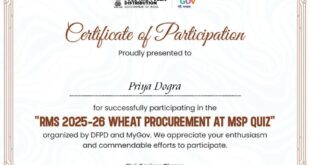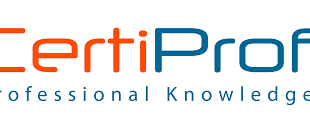Enroll Here: Convolutional Neural Networks in TensorFlow Coursera Certification
Week 1 Quiz Answers: Convolutional Neural Networks in TensorFlow Coursra Quiz Answers
Question 1: What does flow_from_directory give you on the Image Generator?
- The ability to easily load images for training
- The ability to pick the size of training images
- The ability to automatically label images based on their directory name
- All of the above
Question 2: If my Image is sized 150×150, and I pass a 3×3 Convolution over it, what size is the resulting image?
- 148×148
- 150×150
- 153×153
- 450×450
Question 3: If my data is sized 150×150, and I use Pooling of size 2×2, what size will the resulting image be?
- 300×300
- 148×148
- 149×149
- 75×75
Question 4: If I want to view the history of my training, how can I access it?
- Create a variable ‘history’ and assign it to the return of model.fit or model.fit_generator
- Pass the parameter ‘history=true’ to the model.fit
- Use a model.fit_generator
- Download the model and inspect it
Question 5: What’s the name of the API that allows you to inspect the impact of convolutions on the images?
- The model.pools API
- The model.layers API
- The model.images API
- The model.convolutions API
Question 6: When exploring the graphs, the loss levelled out at about .75 after 2 epochs, but the accuracy climbed close to 1.0 after 15 epochs. What’s the significance of this?
- There was no point training after 2 epochs, as we overfit to the validation data
- There was no point training after 2 epochs, as we overfit to the training data
- A bigger training set would give us better validation accuracy
- A bigger validation set would give us better training accuracy
Question 7: Why is the validation accuracy a better indicator of model performance than training accuracy?
- It isn’t, they’re equally valuable
- There’s no relationship between them
- The validation accuracy is based on images that the model hasn’t been trained with, and thus a better indicator of how the model will perform with new images.
- The validation dataset is smaller, and thus less accurate at measuring accuracy, so its performance isn’t as important
Question 8: Why is overfitting more likely to occur on smaller datasets?
- Because in a smaller dataset, your validation data is more likely to look like your training data
- Because there isn’t enough data to activate all the convolutions or neurons
- Because with less data, the training will take place more quickly, and some features may be missed
- Because there’s less likelihood of all possible features being encountered in the training process.
Download Solved Exercise – Programming Assignment: Exercise 1 – Cats vs. Dogs
Week 2 Quiz Answers: Convolutional Neural Networks in TensorFlow Coursra Quiz Answers
Question 1: How do you use Image Augmentation in TensorFLow
- Using parameters to the ImageDataGenerator
- With the keras.augment API
- You have to write a plugin to extend tf.layers
- With the tf.augment API
Question 2: If my training data only has people facing left, but I want to classify people facing right, how would I avoid overfitting?
- Use the ‘horizontal_flip’ parameter
- Use the ‘flip’ parameter and set ‘horizontal’
- Use the ‘flip’ parameter
- Use the ‘flip_vertical’ parameter around the Y axis
Question 3: When training with augmentation, you noticed that the training is a little slower. Why?
- Because the augmented data is bigger
- Because the image processing takes cycles
- Because there is more data to train on
- Because the training is making more mistakes
Question 4: What does the fill_mode parameter do?
- There is no fill_mode parameter
- It creates random noise in the image
- It attempts to recreate lost information after a transformation like a shear
- It masks the background of an image
Question 5: When using Image Augmentation with the ImageDataGenerator, what happens to your raw image data on-disk.
- It gets overwritten, so be sure to make a backup
- A copy is made and the augmentation is done on the copy
- Nothing, all augmentation is done in-memory
- It gets deleted
Question 6: How does Image Augmentation help solve overfitting?
- It slows down the training process
- It manipulates the training set to generate more scenarios for features in the images
- It manipulates the validation set to generate more scenarios for features in the images
- It automatically fits features to images by finding them through image processing techniques
Question 7: When using Image Augmentation my training gets…
- Slower
- Faster
- Stays the Same
- Much Faster
Question 8: Using Image Augmentation effectively simulates having a larger data set for training.
- False
- True
Download Solved Exercise – Programming Assignment: Exercise 2 – Cats vs. Dogs using augmentation
Week 3 Quiz Answers: Convolutional Neural Networks in TensorFlow Coursra Quiz Answers
Question 1: If I put a dropout parameter of 0.2, how many nodes will I lose?
- 20% of them
- 2% of them
- 20% of the untrained ones
- 2% of the untrained ones
Question 2: Why is transfer learning useful?
- Because I can use all of the data from the original training set
- Because I can use all of the data from the original validation set
- Because I can use the features that were learned from large datasets that I may not have access to
- Because I can use the validation metadata from large datasets that I may not have access to
Question 3: How did you lock or freeze a layer from retraining?
- tf.freeze(layer)
- tf.layer.frozen = true
- tf.layer.locked = true
- layer.trainable = false
Question 4: How do you change the number of classes the model can classify when using transfer learning? (i.e. the original model handled 1000 classes, but yours handles just 2)
- Ignore all the classes above yours (i.e. Numbers 2 onwards if I’m just classing 2)
- Use all classes but set their weights to 0
- When you add your DNN at the bottom of the network, you specify your output layer with the number of classes you want
- Use dropouts to eliminate the unwanted classes
Question 5: Can you use Image Augmentation with Transfer Learning Models?
- No, because you are using pre-set features
- Yes, because you are adding new layers at the bottom of the network, and you can use image augmentation when training these
Question 6: Why do dropouts help avoid overfitting?
- Because neighbor neurons can have similar weights, and thus can skew the final training
- Having less neurons speeds up training
Question 7: What would the symptom of a Dropout rate being set too high?
- The network would lose specialization to the effect that it would be inefficient or ineffective at learning, driving accuracy down
- Training time would increase due to the extra calculations being required for higher dropout
Question 8: Which is the correct line of code for adding Dropout of 20% of neurons using TensorFlow
- tf.keras.layers.Dropout(20)
- tf.keras.layers.DropoutNeurons(20),
- tf.keras.layers.Dropout(0.2),
- tf.keras.layers.DropoutNeurons(0.2),
Download Solved Exercise – Programming Assignment: Exercise 3 – Horses vs. humans using Transfer Learning
Week 4 Quiz Answers: Convolutional Neural Networks in TensorFlow Coursra Quiz Answers
Question 1: The diagram for traditional programming had Rules and Data In, but what came out?
- Answers
- Binary
- Machine Learning
- Bugs
Question 2: Why does the DNN for Fashion MNIST have 10 output neurons?
- To make it train 10x faster
- To make it classify 10x faster
- Purely Arbitrary
- The dataset has 10 classes
Question 3: What is a Convolution?
- A technique to make images smaller
- A technique to make images larger
- A technique to extract features from an image
- A technique to remove unwanted images
Question 4: Applying Convolutions on top of a DNN will have what impact on training?
- It will be slower
- It will be faster
- There will be no impact
- It depends on many factors. It might make your training faster or slower, and a poorly designed Convolutional layer may even be less efficient than a plain DNN!
Question 5: What method on an ImageGenerator is used to normalize the image?
- normalize
- flatten
- rezize()
- rescale
Question 6: When using Image Augmentation with the ImageDataGenerator, what happens to your raw image data on-disk.
- A copy will be made, and the copies are augmented
- A copy will be made, and the originals will be augmented
- Nothing
- The images will be edited on disk, so be sure to have a backup
Question 7: Can you use Image augmentation with Transfer Learning?
- No – because the layers are frozen so they can’t be augmented
- Yes. It’s pre-trained layers that are frozen. So you can augment your images as you train the bottom layers of the DNN with them
Question 8: When training for multiple classes what is the Class Mode for Image Augmentation?
- class_mode=’multiple’
- class_mode=’non_binary’
- class_mode=’categorical’
- class_mode=’all’
 Priya Dogra – Certification | Jobs | Internships
Priya Dogra – Certification | Jobs | Internships



